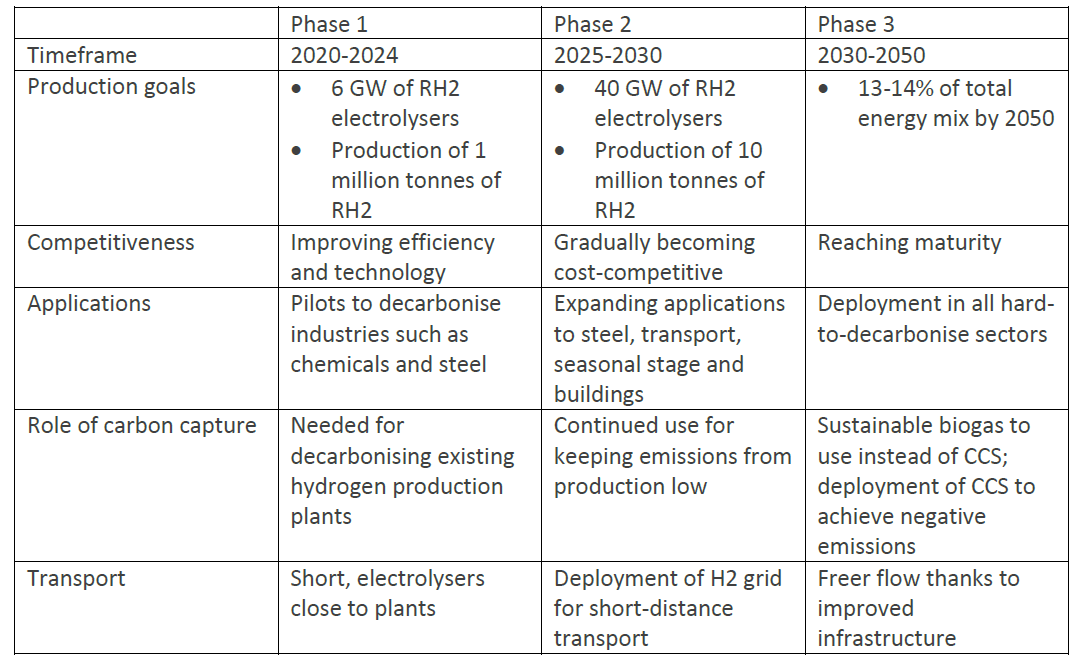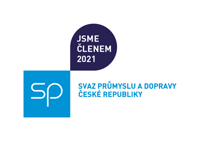15. 7. 2020 / CEFIC - SCHP ČR / Autor: George KAPANTAIDAKIS and Justin VAN SCHEPEN / Zdroj: Cefic
A HYDROGEN STRATEGY FOR A CLIMATE-NEUTRAL EUROPE

Presented on: 8 July 2020 Commissioners: • Executive Vice-President for the European Green Deal, Frans Timmermans • Commissioner for Energy, Kadri Simson
The Hydrogen Strategy seeks to set a path towards the development of a renewable and low-carbon hydrogen market and its progressive integration into the EU’s energy system. Hydrogen can be used as a feedstock, a fuel or an energy carrier and storage and offers a solution to decarbonise industrial processes and economic sectors where reducing carbon emissions is both urgent and hard to achieve.
The Commission has a strong preference for renewable hydrogen, but accepts that during the transition period, low-carbon hydrogen from natural gas will play a role.
The chemical industry has been identified as one of the priority sectors in the Hydrogen Strategy, as detailed further below in this summary report.
Key pathway
The Commission identified three phases (RH2 as abbreviation for renewable hydrogen):

Making Hydrogen attractive
To ensure uptake of hydrogen in the economy, the Commission’s plans include:
• Support schemes:
o Tendering systems for long-term carbon contracts for difference (‘CCfD’), which bridge the cost gap between the CO2 strike price and the actual CO2 price in the ETS. Areas for potential pilot schemes include refineries and fertiliser production, low carbon and circular steel and basic chemicals, and alternative fuels such as ammonia
o Direct market-based support schemes with competitive tenders
• “minimum shares or quotas of renewable hydrogen or its derivatives in specific end-use sectors (for instance certain industries as the chemical sector, or transport applications)” (p. 11)
• “a common low-carbon threshold/standard for the promotion of hydrogen production installations based on their full life-cycle greenhouse gas performance”, which can be linked to ETS benchmarks and/or certifications (p. 12)
• The revision of the EU Emissions Trading System (ETS) to ensure price incentives for hydrogen, while taking into account the risk of carbon leakage.
• BAM: “Should differences in climate ambition levels around the world persist, the Commission will propose a Carbon Border Adjustment Mechanism in 2021 to reduce the risk of carbon leakage, in full compatibility with WTO rules, and will also look at the implications for hydrogen.” (p. 13)
Chemical Industry as one of the priority sectors
Initial stakeholder reactions

• The chemical industry is seen as one of the lead markets for renewable / clean hydrogen: “An immediate application in industry is to reduce and replace the use of carbon-intensive hydrogen in refineries, the production of ammonia, and for new forms of methanol production”.
• The Strategy foresees limited need for infrastructure in the first place as electrolysers could be installed directly next to demand centers including chemical complexes.
Some of the existing hydrogen production plants should be decarbonised by retrofitting them with carbon capture and storage technologies (The 50% figures, which was mentioned in the previous draft disappeared). Investments in retrofitting half of the existing plants with carbon capture and storage are estimated at around €11 billion.
Investments
Massive investments will be needed to reach a mature deployment of renewable hydrogen. Tools that will be used include:
• Clean Hydrogen Alliance (launched on same day): aiming at an ambitious deployment of hydrogen technologies by 2030, bringing together renewable and low-carbon hydrogen production, demand in industry, mobility and other sectors, and hydrogen transmission and distribution, to prepare a clear pipeline of viable projects and boost public-private investment. The alliance is open to all public and private actors with activities for renewable or low-carbon hydrogen that are ready to actively contribute to the objectives set out in the declaration of the alliance.
• IPCEI: the Strategic Forum of IPCEIs will release a report to promote joint investments
• InvestEU: as the Next Generation EU fund should double its resources, the Strategic Investment Window should make funding available
• Sustainable Finance: the Renewed Sustainable Finance Strategy (Q4 2020) and the Taxonomy will guide investments in hydrogen across key economic sectors by promoting activities and projects that will provide a substantial contribution to decarbonisation
• Other funding programmes include the European Regional Development Fund, the Cohesion Fund and the Just Transition Mechanism
Further points of relevance
• Stepping up the production of RH2 will require a large amount of raw materials. To secure these raw materials, the Commission intends to look at the Critical Raw Materials Action Plan, the implementation of the new Circular Economy Action Plan, and EU’s trade policy approach to ensure undistorted, fair trade and investments in those raw materials;
• To create a ‘liquid market’ for RH2, the Commission intends to draw lessons from the gas market, implementing trading points and ensuring access to the market for all
• To build adequate infrastructure, the Commission aims to:
o Revise the TEN-E Regulation, the Gas Market Regulations, the Alternative Fuels Infrastructure Directive and the TEN-T Regulation, mainly to ensure interoperability and uptake
o Ensure full integration of hydrogen in infrastructure planning through repurposing of existing infrastructure and planning of the on Ten-Year Network Development Plans (TYNDPs)
o The Commission notes blending hydrogen with gas is not ideal, but may be possible during the transition period
• The Commission identified that more research and innovation is needed, including on:
o Electrolysers with high capacity (GWs)
o Other production solutions, such as pyrolysis with solid carbon as by-product
o Infrastructure, storage and repurposing
o Large-scale end-use applications, including pre-normative research such as on safety
o Policy-related research, such as monitoring impacts and developing standards and methodologies
• Hydrogen will be high on the External Energy Policy’s agenda. The Commission aims to partner up in particular with Neighbourhood countries and Africa.
• Corporate Europe Observatory released an article ‘A grey deal? Fossil fuel fingerprints on the European Green Deal’ on lobbying on these two strategies. CEO also wrote an op-ed in EUObserver;
• WindEurope: “It’s good these new EU Strategies recognise the primary role of direct electrification. Electrifying heating, transport and industry directly via renewables is the cheapest and most efficient way to decarbonise energy. Renewables are well over a third of Europe’s electricity and rising. We now have to get renewable electricity into heating, transport and industry”, said Giles Dickson, WindEurope CEO;
• Climate Action Europe: “We expected to see an immediate effort to deploy renewables based hydrogen production and invest accordingly, whereas the Hydrogen Strategy keeps the door open for the use of dirty fossil fuels and misses out on indicating a fossil gas phase-out date, which will not get us closer or faster to the Paris Agreement objective.” said Esther Bollendorff, EU Gas Policy Coordinator at CAN Europe;
• EUROFER: “The hydrogen strategy is an important supporting part of the EU’s Green Deal agenda”, added Mr Eggert. “It must, however, form part of a wider strategy, encompassing not only the wider energy policy of the Union, but also the support for industries that use this energy so that they stay globally competitive during and beyond the transition.”

